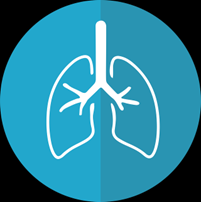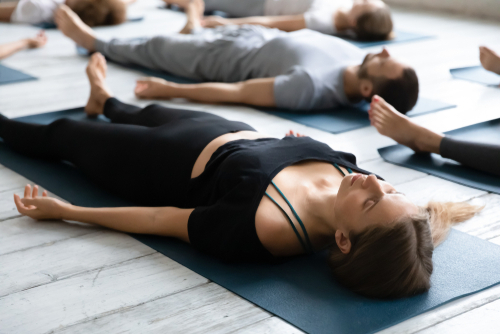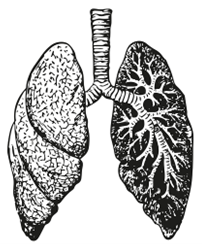 The Wim Hoff breathing method is a technique developed by professor Buteyko in the 1950s, with the aim of helping people with breathing difficulties such as asthma, sleep apnea, and anxiety. This technique is based on the belief that by changing the way we breathe, we can improve our overall health and wellbeing. The Wim Hoff breathing method involves a series of exercises that focus on slow, deep breathing through the nose, using the diaphragm and abdominal muscles. The Wim Hoff breathing technique is a simple yet powerful breathing exercise that can be practiced by anyone, regardless of age, fitness level, or prior experience. In this newsletter, we will explore the benefits of the Wim Hoff breathing method, including its potential to reduce stress, improve sleep, enhance physical performance and much more.
The Wim Hoff breathing method is a technique developed by professor Buteyko in the 1950s, with the aim of helping people with breathing difficulties such as asthma, sleep apnea, and anxiety. This technique is based on the belief that by changing the way we breathe, we can improve our overall health and wellbeing. The Wim Hoff breathing method involves a series of exercises that focus on slow, deep breathing through the nose, using the diaphragm and abdominal muscles. The Wim Hoff breathing technique is a simple yet powerful breathing exercise that can be practiced by anyone, regardless of age, fitness level, or prior experience. In this newsletter, we will explore the benefits of the Wim Hoff breathing method, including its potential to reduce stress, improve sleep, enhance physical performance and much more.
Stress Reduction
One of the primary benefits of the Wim Hoff breathing method is its ability to reduce stress. Breathing is a critical component of the body’s stress response, and by changing the way we breathe, we can activate the body’s relaxation response. The Wim Hoff breathing method focuses on slow, deep breathing through the nose, which can help to reduce stress and promote relaxation.
Studies have shown that the Wim Hoff breathing method can be an effective technique for reducing stress levels. A study published in the Journal of Occupational Health in 2004 found that participants who practiced the Wim Hoff breathing method for six months had significantly lower levels of stress and anxiety than those who did not practice the technique. Additionally, a study published in the Journal of Alternative and Complementary Medicine in 2008 found that participants who practiced the Wim Hoff breathing method for four weeks had lower levels of cortisol, a hormone associated with stress.
Improved Sleep
Another benefit of the Wim Hoff breathing method is its potential to improve sleep quality. Breathing patterns have a significant impact on sleep, and the Wim Hoff breathing method can help to regulate breathing and promote deeper, more restful sleep.
 A study published in the Journal of Sleep Research in 2012 found that participants who practiced the Wim Hoff breathing method for four weeks had significant improvements in sleep quality and a reduction in the number of awakenings during the night. The study also found that participants reported feeling more rested and refreshed in the morning after practicing the technique.
A study published in the Journal of Sleep Research in 2012 found that participants who practiced the Wim Hoff breathing method for four weeks had significant improvements in sleep quality and a reduction in the number of awakenings during the night. The study also found that participants reported feeling more rested and refreshed in the morning after practicing the technique.
Enhanced Physical Performance
The Wim Hoff breathing method can also have benefits for physical performance. Breathing is a critical component of physical activity, and by improving breathing patterns, we can enhance our ability to perform physical tasks. A study published in the International Journal of Sports Medicine in 2011 found that athletes who practiced the Wim Hoff breathing method for four weeks had significant improvements in their endurance capacity. The study also found that the athletes had lower heart rates during exercise, suggesting that the technique may improve cardiovascular function.
Improved Lung Function
The Wim Hoff breathing method can also have benefits for people with breathing difficulties such as asthma and COPD. By focusing on slow, deep breathing through the nose, the technique can help to improve lung function and reduce symptoms. A study published in the Journal of Asthma in 2000 found that participants with asthma who practiced the Wim Hoff breathing method for eight weeks had significant improvements in lung function and a reduction in symptoms. The study also found that participants were able to reduce their use of medication for asthma.
Reduced Anxiety
The Wim Hoff breathing method can also have benefits for people with anxiety disorders. Breathing patterns are closely linked to anxiety, and by changing the way we breathe, we can reduce feelings of anxiety and promote relaxation. A study published in the Journal of Psychiatric Research in 2010 found that participants with anxiety disorders who practiced the Wim Hoff breathing method for four weeks had significant reductions in anxiety symptoms. The study also found that participants had improvements in quality of life and overall wellbeing.
The Wim Hoff breathing method may also have benefits for immune function. Breathing patterns have been shown to have an impact on immune function, and by improving breathing.
How To Perform the Wim Hoff Breathing Technique
As you can see the Wim Hoff Breathing Technique can be a powerful tool to enhance your wellbeing. This controlled pattern of breathing can bring about profound changes to the body when performed properly.
Here is a step-by-step guide on how to perform the Wim Hoff breathing technique
.
- Find a quiet and comfortable space: Choose a peaceful environment where you can sit or lie down comfortably without any distractions.
- Relax your body: Close your eyes and take a few moments to relax your muscles. Release any tension or tightness in your body, starting from your head down to your toes.
- Adopt a comfortable posture: Sit in an upright position with your spine straight, or lie down on your back if that is more comfortable for you. Allow your body to feel supported and relaxed.
- Become aware of your breath: Begin by observing your natural breathing pattern without attempting to change it. Pay attention to the sensation of the breath as it enters and leaves your body.
- Deep inhalation through the nose: Take a slow and deep breath in through your nose, focusing on filling your lungs with air. Feel your abdomen expand as you breathe in. Imagine that you are filling a balloon in your abdomen and chest area.
- Hold your breath for a few seconds at the top of the inhale.
- Exhalation through pursed lips: Exhale slowly through slightly pursed lips, as if you are blowing out a candle. Make sure to release the breath gently and completely. Imagine that you are deflating the balloon in your abdomen and chest area.
- Hold your breath for a few seconds at the bottom of the exhale.
- Lengthen the exhalation: Gradually lengthen the duration of your exhalation compared to your inhalation. Aim for a slightly longer exhale than the inhale, but do not strain or force the breath.
- Maintain a rhythmic pattern: Establish a steady and rhythmic pattern of breathing that feels comfortable for you. It can be helpful to count the duration of your inhalation and exhalation to maintain consistency.
- Practice for a recommended duration: Start by practicing the Wim Hoff breathing technique for a few minutes initially and gradually increase the duration over time. Repeat the above steps for 20-40 cycles or as long as you feel comfortable. You might also aim for a time goal of 10-20 minutes of per session.
- Integrate into your routine: Incorporate the Wim Hoff breathing technique into your daily routine for maximum benefits. You can practice it in the morning to start your day on a positive note or before bed to promote relaxation and better sleep.
Tips for enhancing the effectiveness of the Wim Hoff breathing technique:
- Start with a few cycles of the breathing exercise and gradually increase the duration and intensity as you get comfortable.
- Focus on the quality of your breath rather than the quantity. The goal is to breathe deeply and fully, not to hyperventilate.
- Use your abdominal muscles to control the flow of your breath. You can place your hand on your belly to feel the rise and fall of your abdomen as you breathe.
- Pay attention to your body sensations and emotions as you practice. The Wim Hoff breathing technique can help you release tension, anxiety, and negative emotions.
Remember, it’s essential to listen to your body and adjust the technique to suit your individual needs and comfort level. If you have any respiratory or health conditions, it is advisable to consult with a healthcare professional before practicing any new breathing techniques. In summary, the Wim Hoff breathing technique is a simple and effective way to improve your breathing patterns, reduce stress, and enhance your overall well-being. With regular practice and attention, you can experience the benefits of this technique in your daily life.
At [Core] we are dedicated to helping you improve your health in all the areas of your life. It is our sincere goal to partner with you in becoming healthier than you have ever been.








